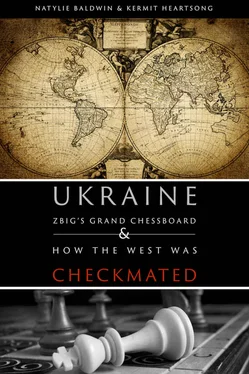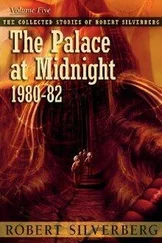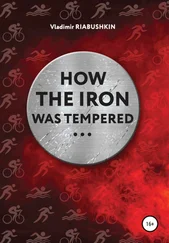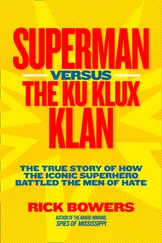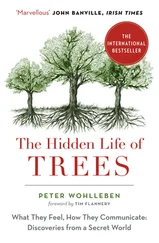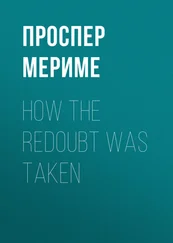Kermit Heartsong - Ukraine - ZBIG's Grand Chess Board & How The West Was Checkmated
Здесь есть возможность читать онлайн «Kermit Heartsong - Ukraine - ZBIG's Grand Chess Board & How The West Was Checkmated» весь текст электронной книги совершенно бесплатно (целиком полную версию без сокращений). В некоторых случаях можно слушать аудио, скачать через торрент в формате fb2 и присутствует краткое содержание. Год выпуска: 2015, Жанр: Политика, на английском языке. Описание произведения, (предисловие) а так же отзывы посетителей доступны на портале библиотеки ЛибКат.
- Название:Ukraine: ZBIG's Grand Chess Board & How The West Was Checkmated
- Автор:
- Жанр:
- Год:2015
- ISBN:нет данных
- Рейтинг книги:4 / 5. Голосов: 1
-
Избранное:Добавить в избранное
- Отзывы:
-
Ваша оценка:
- 80
- 1
- 2
- 3
- 4
- 5
Ukraine: ZBIG's Grand Chess Board & How The West Was Checkmated: краткое содержание, описание и аннотация
Предлагаем к чтению аннотацию, описание, краткое содержание или предисловие (зависит от того, что написал сам автор книги «Ukraine: ZBIG's Grand Chess Board & How The West Was Checkmated»). Если вы не нашли необходимую информацию о книге — напишите в комментариях, мы постараемся отыскать её.
Ukraine: ZBIG's Grand Chess Board & How The West Was Checkmated — читать онлайн бесплатно полную книгу (весь текст) целиком
Ниже представлен текст книги, разбитый по страницам. Система сохранения места последней прочитанной страницы, позволяет с удобством читать онлайн бесплатно книгу «Ukraine: ZBIG's Grand Chess Board & How The West Was Checkmated», без необходимости каждый раз заново искать на чём Вы остановились. Поставьте закладку, и сможете в любой момент перейти на страницу, на которой закончили чтение.
Интервал:
Закладка:
It should be stressed that Brzeziński's reckless Grand Chessboard gambit has little traction with the American people. According to a Pew poll conducted in April of 2014, Americans strongly oppose sending military aid to Ukraine and believe, just as strongly, that what happens in Ukraine has little to do with America's vital interests (Drake 2014).
The Neoconservatives
These people are crazy, they’re frightening. Believe me, I rubbed up close and personal with them for four years. I can tell you how frightening they are. I sat in the Pentagon and listened to a briefing where Iraq was just the start, then we’re going to Syria, then we’re going to Iran. You know, these people are nuts….Their long-term plan is American hegemony — now, tomorrow and forever. And when I say hegemony I don’t just mean America rules as in Pax Americana. I mean America has its way wherever it goes, whenever it goes and however it wants that way. And this is commercial, financial and economic as much as it is geopolitical.
— Col. Lawrence Wilkerson, former Chief of Staff to Secretary of State Colin Powell (Kall 2014)
The Philosophy
The godfather of Neoconservative philosophy was Leo Strauss. A one-time friend and fellow-traveler in philosophical circles with Carl Schmitt, a German Nazi philosopher and jurist, Strauss developed what would become his ideology in response to a newly dominant post-WWII America that he perceived as crass, materialistic, and devoid of a meaningful sense of community.
According to the well-received 2004 BBC documentary The Power of Nightmares , Strauss was an enigmatic figure who never appeared in the media but “devoted his time to creating a loyal band of students.” Some of those students went on to hold major positions of power within the George W. Bush (Bush II) administration, though some of them had been influential before then. Paul Wolfowitz, Elliot Abrams, Irving and William Kristol, and Michael Ledeen were all greatly influenced by the teachings of Strauss. Ironically, all were former leftists to varying degrees who had become disillusioned with what they perceived to be the failings of liberalism in the midst of the social tumult of the 1960s and 70s.
The basic idea behind Strauss’s teaching was that liberalism and individualism would eventually destroy the fabric of the national community. That community, according to Strauss, seemed only to have a meaningful and coherent identity in relation to an outside “other.” This “other,” by its very nature, represents a threat that must be fought via a full-scale mobilization of society. Only within this focused and unified fight against an outside “evil” foe can the members of society reinforce their common ties and have a satisfying moral purpose as those on the “good” side of an epic life-and-death struggle.
Underscoring this whole scheme was the need for myths, which Strauss conceded did not need to be based in reality and that the leaders themselves did not have to believe, hearkening back to the concept of the “noble lie” in political philosophy. A successful society would be led by those wise enough to know how to pull the levers behind the curtain to keep society unified and stable (Curtis 2004).
These ideas are reflected in Schmitt’s political theology as Strauss himself summed them up in a 1932 letter to Schmitt: “Because man is by nature evil, he therefore needs dominion. But dominion can be established, that is, men can be unified only in a unity against — against other men” (Zuckert 2014).
It is this need for a mythology that paints America as the force for good against an evil foe that has motivated Neoconservatives to opportunistically ally with other elements that at first glance may seem unlikely, such as fundamentalist Christians during Bush II’s administration and the Responsibility to Protect (R2P) crowd as we will see later.
Having been largely shunned in the academic community, the Neoconservatives entered think tanks and public service as a way to spread their influence. The first politicians they successfully latched onto were Donald Rumsfeld and Dick Cheney, who served as the Secretary of Defense and Chief of Staff, respectively, under President Gerald Ford. Together they put into place the first attack on Realist Henry Kissinger’s détente policy with the Soviet Union by accusing the Soviets of violating the nuclear arms treaties the Nixon administration had negotiated. These allegations were completely baseless, but that didn’t stop Rumsfeld from persuading Ford to set up Team B, which would be headed by Paul Wolfowitz, to investigate.
An illustration of the Neocons’ tendency to be impervious to arguments or evidence that was contrary to their views comes from Dr. Anne Cahn, who worked with the Arms Control and Disarmament Agency during this time. According to Cahn, the Neocons would sift through data that the intelligence community had already analyzed and come up with conclusions that did not match reality but instead their own pre-conceived fantasies:
I would say that all of it was fantasy. I mean, they looked at radars out in Krasnoyarsk and said, “This is a laser beam weapon,” when in fact it was nothing of the sort. They even took a Russian military manual, which the correct translation of is “The Art of Winning.” And when they translated it and put it into Team B, they called it “The Art of Conquest.” Well, there’s a difference between “conquest” and “winning.” And if you go through most of Team B’s specific allegations about weapons systems, and you just examine them one by one, they were all wrong. (Curtis 2004)
But that didn’t stop the Neocons from creating The Committee on the Present Danger, a lobbying group that sought to publicize the bogus “findings” of Team B. One of the politicians who bought into this group’s fairy tales was future president Ronald Reagan.
The Neocons gained more influence during the Reagan administration. In fact, many in the Bush II administration would be recycled from the Reagan era. As Matlock (2010) noted in his book, Superpower Illusions: How Myths and False Ideologies Led America Astray and How to Return to Reality, although many intelligence professionals and diplomats knew for some time that the USSR was experiencing significant internal challenges, they were drowned out by the neocons’ Cold War rhetoric of an evil empire that was voracious in its ambitions to take over the world and threaten America. According to the Power of Nightmares :
They would set out to recreate the myth of America as a unique nation whose destiny was to battle against an evil in the world. And in this project, the source of evil would be America’s Cold War enemy: the Soviet Union. And by doing this, they believed that they would not only give new meaning and purpose to people’s lives, but they would spread the good of democracy around the world. (Curtis 2004)
Consequently, defense spending was greatly increased with no regard for deficits and military aid was provided to dictators who said the magic words “I’m fighting evil communists.” Appeals to religious mythology were incorporated into public debate to obfuscate the real issues (Curtis 2004).
Reagan himself did not fully embrace Neoconservative ideology but some key people around him were greatly influenced by the Neoconservative woo-woo. Reagan’s CIA director William Casey, was one such person. He was convinced by the then Special Advisor to the Secretary of State, Michael Ledeen, that “terrorist” groups throughout the world, such as the PLO, the Provisional IRA, and Baader-Meinhof in Germany, were part of a terrorist network overseen by the Soviet Union instead of local groups that emerged to fight various grievances specific to each group. Ledeen was using a book called The Terror Network as the basis for this belief. CIA specialists at the time tried to disabuse Casey of this fallacy — namely due to the fact that much of what was in The Terror Network was black propaganda that the CIA itself had invented to smear the Soviet Union. Melvin Goodman, who served as Head of Soviet Affairs for the CIA from 1976 to 1987 stated:
Читать дальшеИнтервал:
Закладка:
Похожие книги на «Ukraine: ZBIG's Grand Chess Board & How The West Was Checkmated»
Представляем Вашему вниманию похожие книги на «Ukraine: ZBIG's Grand Chess Board & How The West Was Checkmated» списком для выбора. Мы отобрали схожую по названию и смыслу литературу в надежде предоставить читателям больше вариантов отыскать новые, интересные, ещё непрочитанные произведения.
Обсуждение, отзывы о книге «Ukraine: ZBIG's Grand Chess Board & How The West Was Checkmated» и просто собственные мнения читателей. Оставьте ваши комментарии, напишите, что Вы думаете о произведении, его смысле или главных героях. Укажите что конкретно понравилось, а что нет, и почему Вы так считаете.
